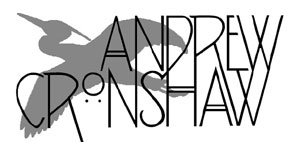
- Andrew Cronshaw website -
- Andrew Cronshaw MySpace -
- Cloud Valley Music website -
- Andrew Cronshaw website -
- Andrew Cronshaw MySpace -
- Back to Reviews Introduction page -
Written in
fRoots
issue 220, 2001
OREKA TX
Quercus Endorphina
Elkarlanean KD-579 (2001)
Txalaparta. Two rough, thick planks of wood, resting on soft furs, leaves or
cloth draped over upturned baskets or trestles. Two players strike them with
thick wooden batons, one held vertically in each hand. A strange, old,
minimalist music that explores the slight tonal and timbral variations to be
drawn out of each plank by hitting it at the ends, in the middle, on the edge. A
subtle musical conversation between two people, each appreciating and responding
to the pitches and patterns made by the other.
Along come social and occupation changes, in
Euskadi as elsewhere, and the txalaparta tradition gets close to dying out. But
some young players, among them Igor Otxoa and Harkaitz Martínez who are Oreka
TX, take it up, becoming skilful. They naturally experiment, not only with
playing techniques but the instrument’s possibilities.
Why not add a whole lot more planks? Tune them to
a scale. And of course if you’re going to want to play with other instruments,
it’ll probably need to be that universalised sterilised equal temperament scale,
not the old way of notes that sound right to the individual player. And look
what you’ve got now! Hey, a rather big and dead-sounding xylophone!
And so, having created a “revamped, stronger and
more attractive variant”, to quote the press release, you’re in a position to
make it “a feature of cultural distinction, with a touch of ethnic flavour”. But
surely the concept of extracting minute subtleties of tone, microtone and rhythm
from a pair of heavy rough-hewn planks is more culturally distinctive than a big
xylophone playing accordion tunes?
Oh sure, traditions must evolve or they die, and
noticeable evolutionary clicks of the cog are usually criticised as crass and
destructive, but no amount of criticism ever stopped the process and they often
give rise to a new flowering; indeed Oreka TX and this album are a significant
part of a considerable upsurge in txalaparta playing. It’s a well-made,
stylishly presented record, destined to widen international knowledge and esteem
of the instrument, with very skilful txalaparta players (who also make some use
of tobera, the iron txalaparta, and the stone, lithophone version), neat
trikitixa style tunes, and excellent Euskal and international guests (producer
Kepa Junkera, Mikel Laboa, Glen Velez, Phil Cunningham, Justin Vali, Ibon
Koteron’s alboka, Michel Bordeleau’s feet).
But something’s missing...
And then, in the 2 minutes 59 seconds of track 8,
Oreka (“balance, equilibrium”), suddenly there it is. And on the last
track, not just in the woody staccato from a 1990 recording of a pair who
carried txalaparta through the thin times, Pello Zuaznabar and Ramon Goikoetxea,
but also in the overlapping speaking voices, there it is again. Not neat tunes
scored and transferred, not one-note-per-plank, but that sensitivity to mere
hints of pitch variation, that delight and intensity of concentration of two
people improvising in rhythmic co-operation. Txalaparta.
© 2001
Andrew Cronshaw
You're welcome to quote from reviews on this site, but please credit the writer
and fRoots.
Links:
fRoots - The feature and
review-packed UK-based monthly world roots music magazine in which these reviews
were published, and by whose permission they're reproduced here.
It's not practical to give, and keep up to date,
current contact details and sales sources for all the artists and labels in
these reviews, but try Googling for them, and where possible buy direct from the
artists.
CDRoots.com in the USA, run by
Cliff Furnald, is a reliable and independent online retail source, with reviews,
of many of the CDs in these reviews; it's connected to his excellent online magazine
Rootsworld.com
For more reviews click on the regions below
NORDIC
BALTIC
IBERIA (& islands)
CENTRAL & EASTERN EUROPE, & CAUCASUS
OTHER EUROPEAN AMERICAS OTHER, AND WORLD IN GENERAL
- Back to Reviews Introduction page -